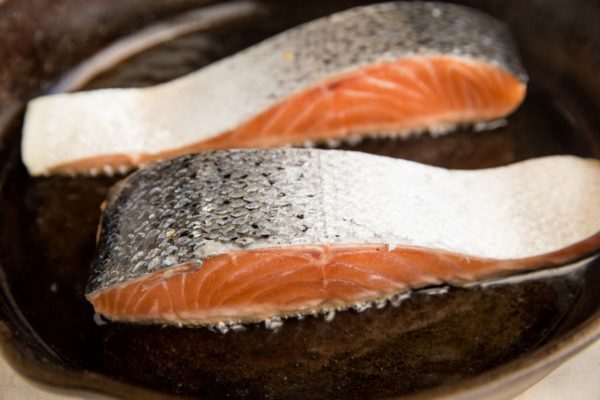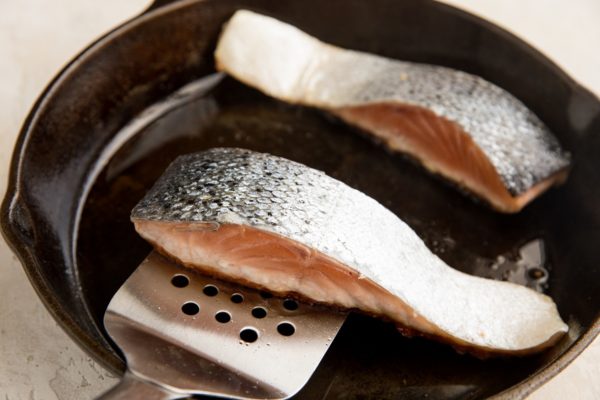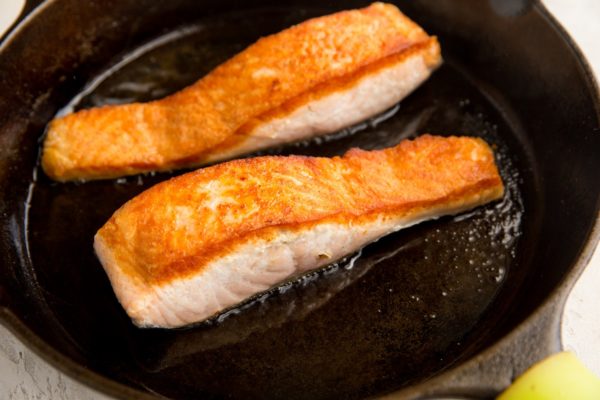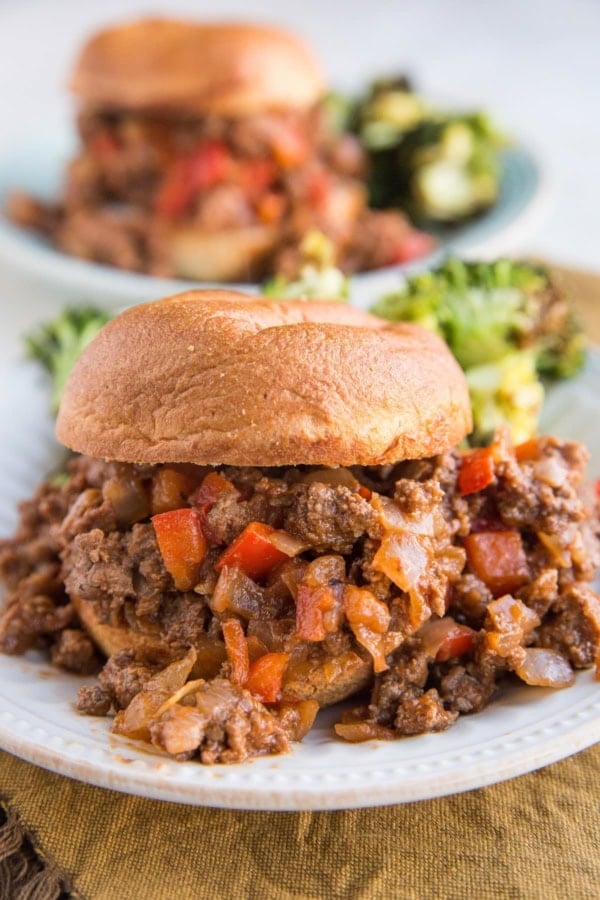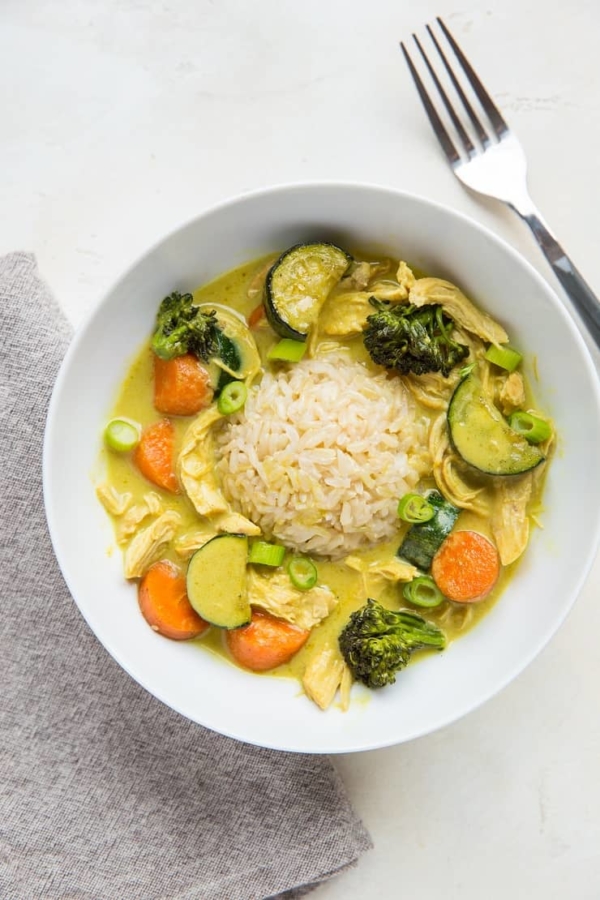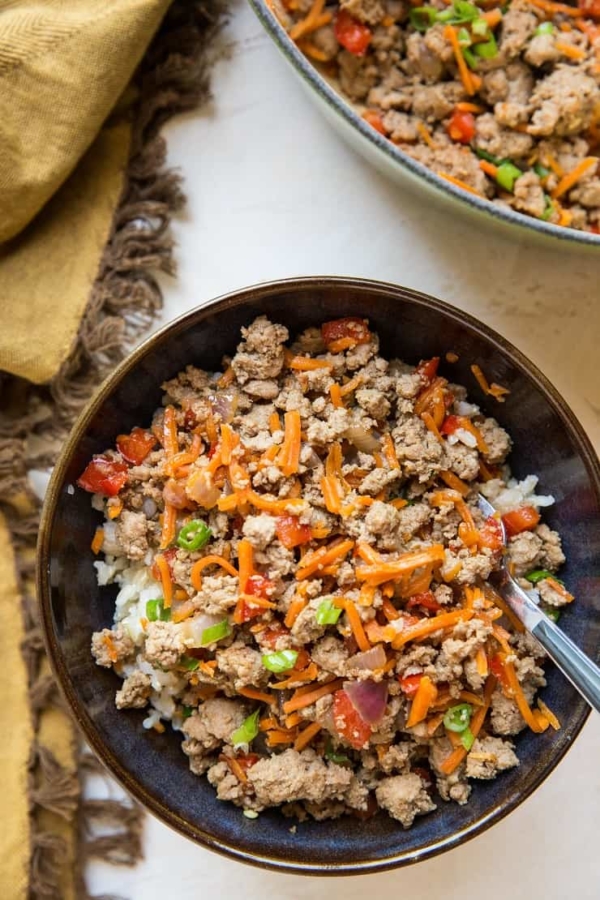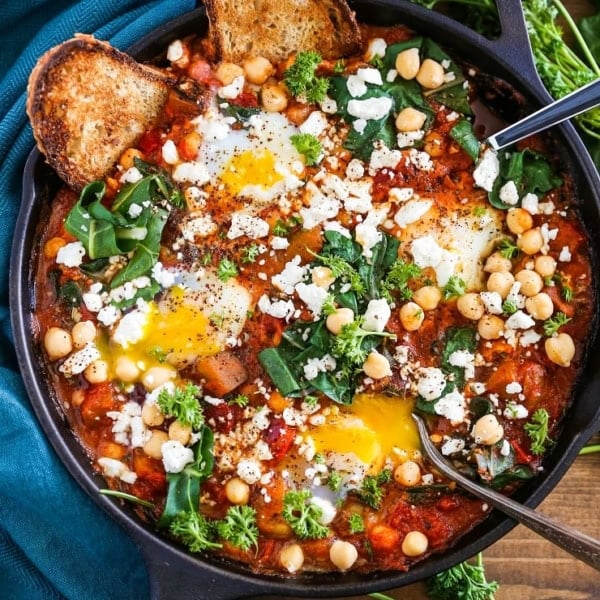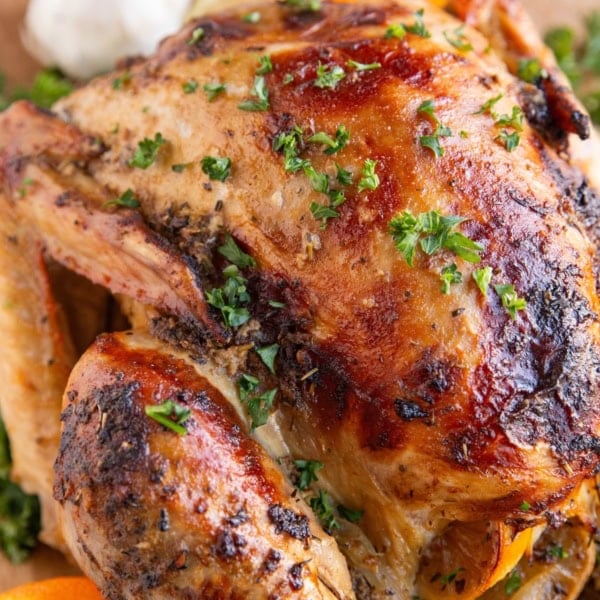How to Cook Salmon in a Skillet in a few easy steps! This goof-proof method for cooking crispy skillet salmon results in amazing taste and texture every time. The golden-brown crust on both the skin and the top is simply sensational!
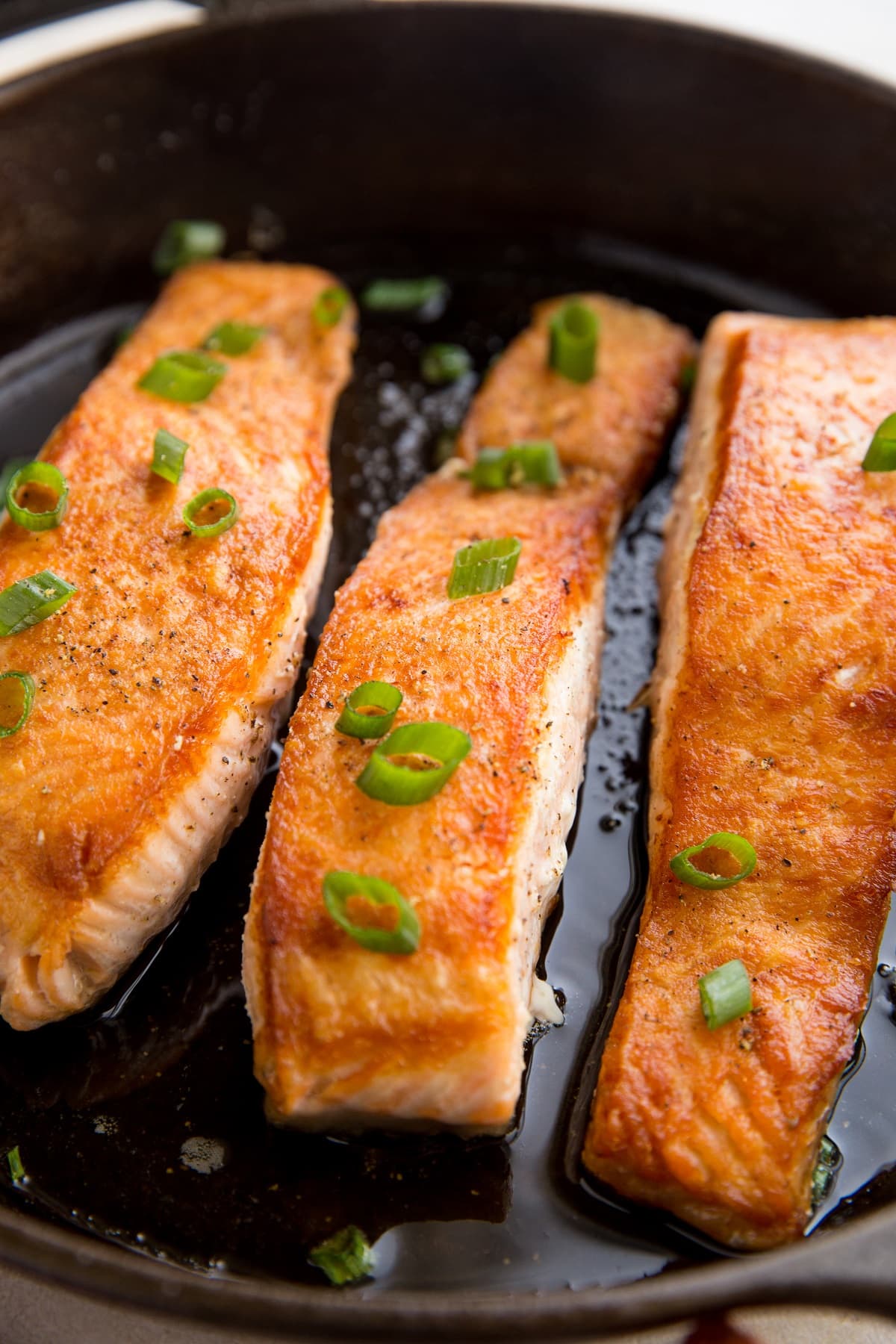
So you want to make incredible crispy salmon?
Well, you’re in the right spot, because everything you need to know about how to cook salmon in a skillet for the crispiest, most tender result is right here in this post!
Cooking fish at home can feel intimidating, but it’s really quite simple once you have the hang of it. Pan-seared salmon is not only a simple method for cooking salmon, but it results in amazing crispy salmon skin and flesh that is golden brown with perfectly tender inside.
For years, I’ve broiled salmon in the oven using the method I showed in My Go-To Crispy Salmon Recipe, but recently I’ve taken to cooking salmon in cast iron. It’s one of those easy meals I put on repeat.
However, this seared salmon recipe has won me over with the insanely crunchy skin…it is simply the best salmon!
The basic method in this post yields a healthy meal that can be made any night of the week with very little fuss and very few ingredients!
Salmon is rich in protein and omega-3 fatty acids, which produce a natural anti-inflammatory affect, and are paramount for brain and hormonal health.
Let’s dive right into how cook salmon in a skillet
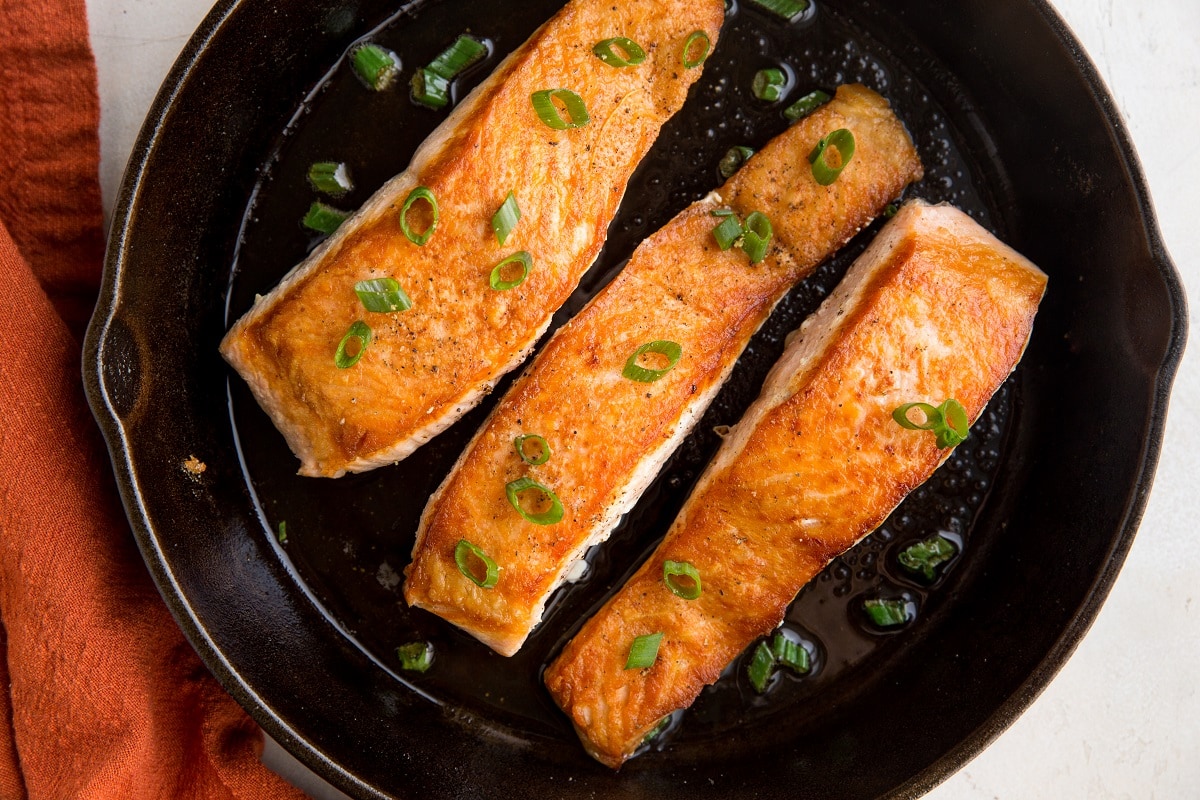
How to Cook Salmon in a Skillet:
If you have the time, bring the salmon out of the refrigerator 10 to 30 minutes before cooking to bring it closer to room temperature. This helps the salmon cook evenly.
If the salmon filet is large, cut it into smaller individual filets. Smaller filets (no more than 3 inches wide) are also easier to flip and they also cook faster.
Season the salmon flesh liberally with kosher salt and any other seasonings you like (I stick with salt).
Heat a large cast iron or non-stick skillet over medium-high heat and add enough avocado oil to generously coat the surface, about 3 tablespoons.
Allow the skillet to heat up for a few minutes until it is sizzling hot. You want it to be between 400 and 500 degrees while cooking the salmon. If you have a laser thermometer, now is a great time to use it to test the temperature of the skillet before you place the salmon in it.
Carefully place the salmon filets flesh side down (skin side up) on the hot skillet. Be careful to gently apply it to the skillet rather than plopping it down, or grease will surely fly back at you.

Allow the salmon to cook for 6 minutes on the flesh side. Use a metal spatula to carefully flip the salmon and cook for 4 minutes on the salmon skin side, or cook to whatever doneness you prefer.
Note when flipping the salmon: you don’t need to fully pick up the salmon and plop it down when flipping it, but rather you can use the spatula to gently roll it over.
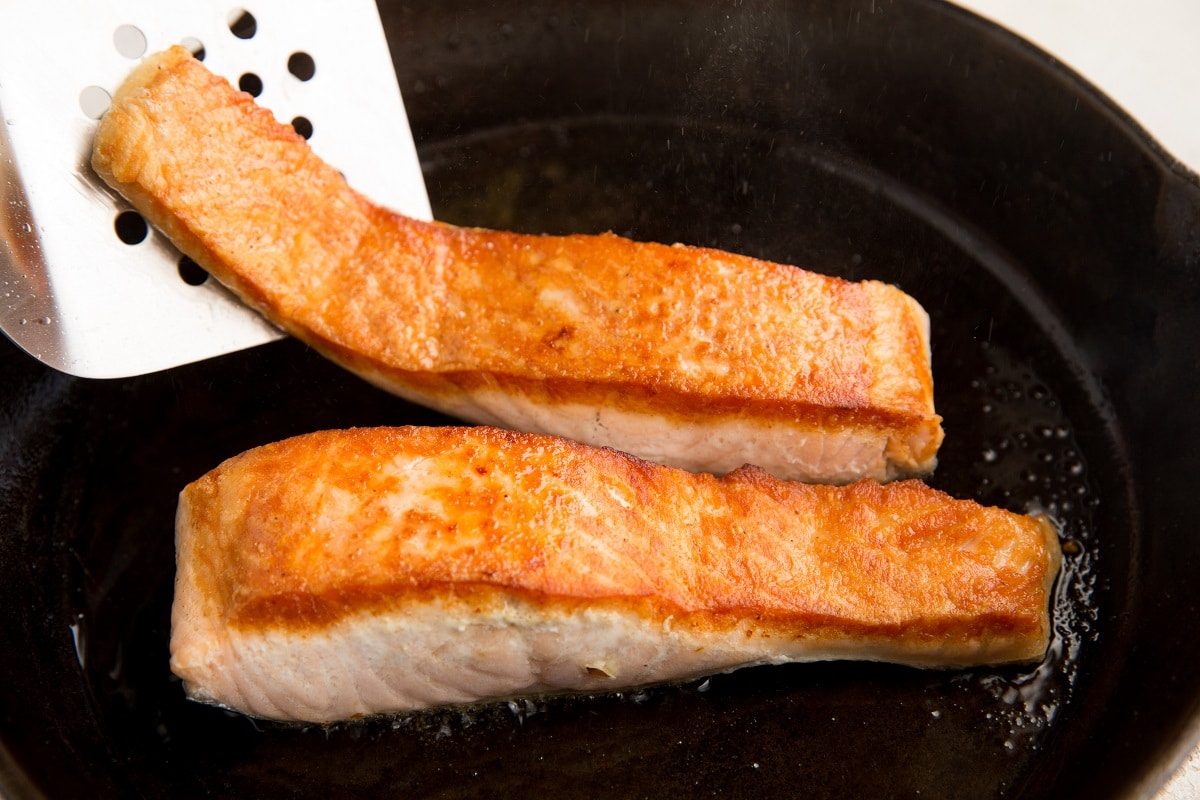
If you’d like, you can turn the salmon filets on their sides to get a golden crust on the outer edges.
To check the internal temperature of the fish, insert a meat thermometer into the thickest part of the filet.
Remove the salmon filets from the skillet using your metal spatula and serve with your favorite side dishes.
Store any leftover pan-fried salmon in an airtight container in the refrigerator for up to 4 days.
How Long To Cook Salmon in A Skillet:
The exact amount of cooking time depends on the thickness of the salmon filets, the temperature of the fish when it hits the skillet, and your desired level of doneness.
For the crispiest salmon, cook for 5 minutes per side, or go by the internal temperature you’re aiming for.
For medium salmon, cook until the internal temperature reaches 120 to 135 degrees F.
The FDA considers salmon to be fully cooked once it reaches 145 degrees F, so if you want to ensure the salmon is completely cooked through, aim for 145 degrees or higher.
Salmon is considered raw when it is 110 degrees Fahrenheit or below, so to avoid any potential illness, be sure to cook it well above 110.
To check the temperature of salmon, insert an instant read thermometer into the center of the thicket part of the filet and wait until the numbers stop increasing.
Tips for Cooking Perfect Skillet Salmon:
The temperature of the skillet should remain around 400 to 500 degrees Fahrenheit throughout the cooking process. Use a laser thermometer if you have one.
When you flip the salmon, use the spatula to gently tip it over versus picking up the whole filet and plopping it down. This will minimize grease splatter.
Speaking of grease splatter, you can use a splatter screen to minimize the amount of grease that ends up around the stove top.
And of course, I can’t emphasize enough how handy a meat thermometer is in ensuring all of your animal proteins turn out perfectly.
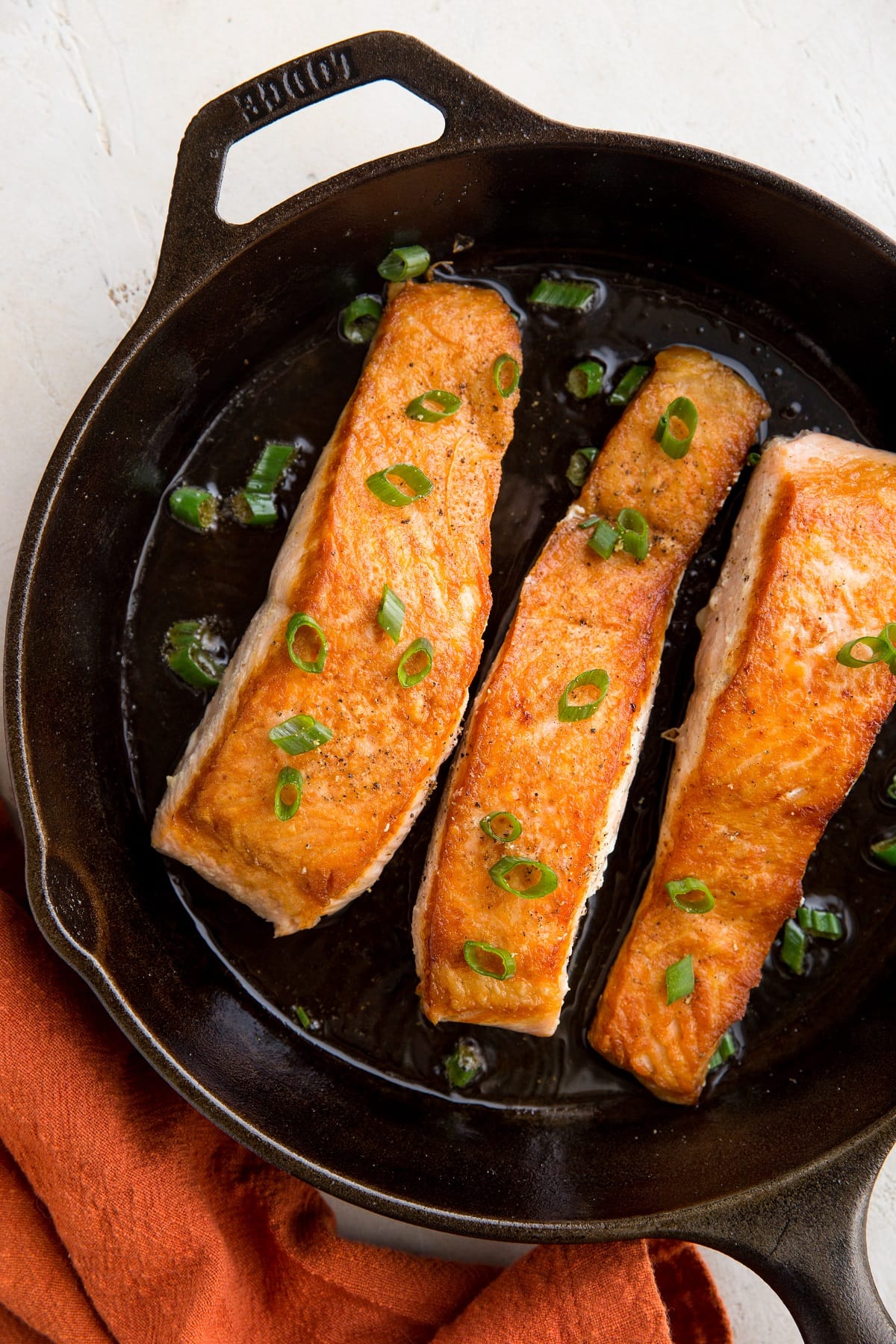
What Type of Salmon To Use:
For the best tasting result, use fresh fish with a higher fat content. While leaner salmon like sockeye salmon contains fewer calories, Atlantic Salmon or King Salmon (from Copper River Salmon) are my two favorites for the most delicious fish.
Wild salmon contains a higher omega-3 ratio than farm-raised salmon, so it’s a great resource for health-conscious individuals.
I also recommend buying skin-on salmon, as you’ll miss the amazing crispy skin with skinless salmon. Plus, salmon skin is where the majority of the omega-3s are located.
In this sense, frozen salmon is never my go-to but I also understand that not all parts of the U.S. have access to fresh salmon.
In essence, select what you love and get to pan frying!
What Type of Skillet to Use to Cook Salmon:
My personal preference for cooking salmon in a skillet is well-seasoned cast iron skillet. Well-seasoned being the operative term here. As long as cast iron has that shiny, slippery surface, it cooks salmon perfectly each and every time without any fish sticking to the skillet.
While you can absolutely use a stainless steel skillet, I haven’t had much luck getting the skillet hot enough to sear the fish without it sticking to the pan. Stainless steel doesn’t do as well at high temperatures as cast iron, so you often end up with fish sticking to the skillet and an uneven cook.
Non-stick skillets work like a charm for cooking salmon as well. Because I’m a nerd about non-toxic cookware, my preference is PFOA-Free cookware. For this reason, my favorite brand of non-stick cookware is Swiss Diamond, which is PFOA-free and diamond-plated.
The main point to remember here is that using a quality skillet pays dividends in the result. A lower quality skillet will not cook the fish evenly and you run the risk of not getting that beautiful crust.
The most cost-effective skillet is cast iron, and in my opinion it is also the best pan to use, but remember: it does need to be seasoned well when you pan sear salmon so that the fish easily slides when you flip it.
How to Season Salmon:
When I cook salmon in a skillet, I only use kosher salt to season it. This is my personal preference to ensure the salmon cooks cleanly and evenly without a lot of spices floating around the skillet.
That said, you can season salmon in many different ways! When I bake it in the oven, I use paprika, garlic powder, onion powder and salt. This combination of spices wins every time!
You can also use black pepper, ground cumin, curry powder, Cajun seasoning, chili powder…your options are virtually endless.
If you want to get fancy, you can serve the salmon with a lemon butter sauce with fresh garlic
That’s it! Everything you need to know in order to cook perfect crispy salmon in a skillet each and every time!
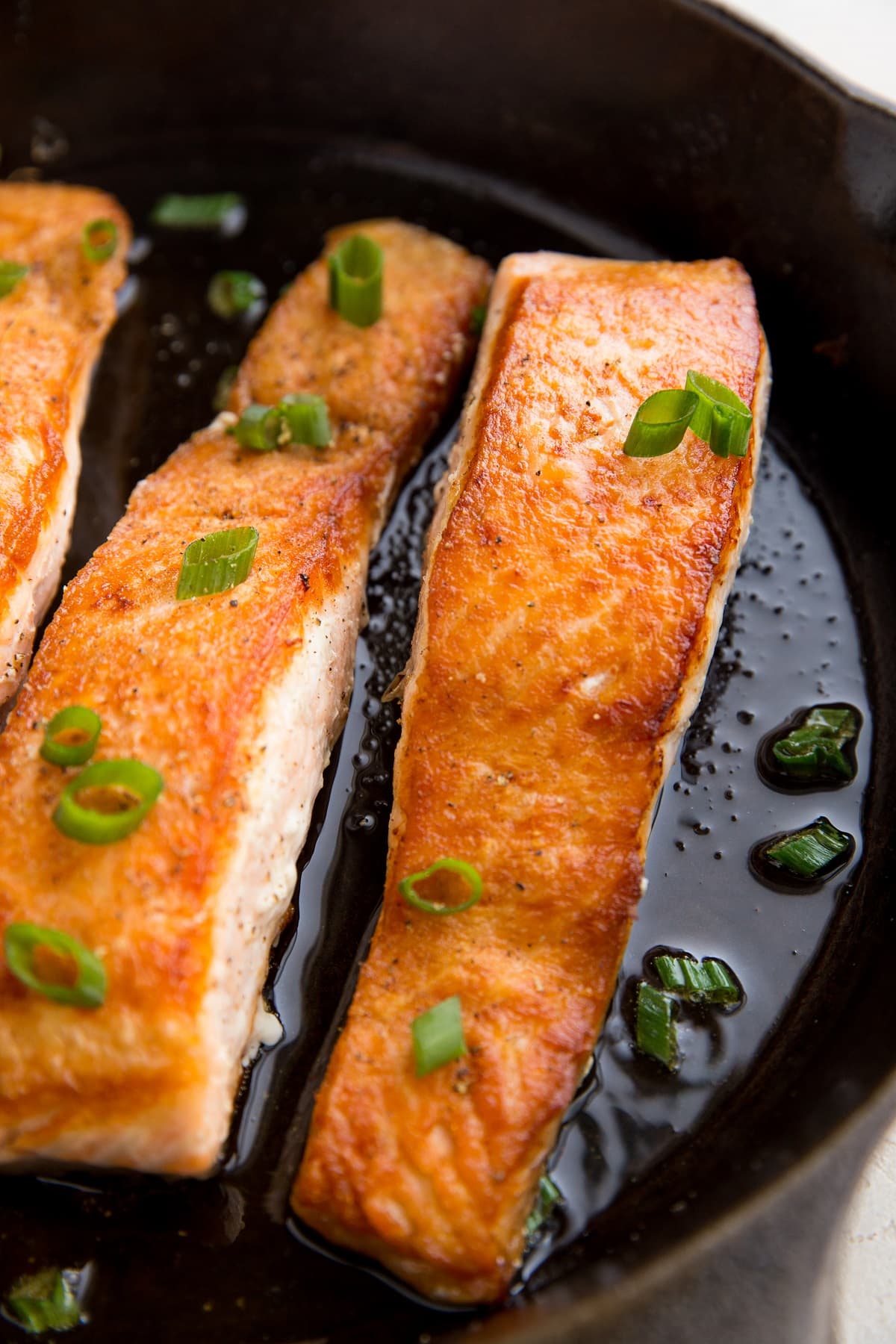
What to Serve With Crispy Skillet Salmon:
- Garlic Herb Roasted Vegetables
- Roasted Brussel Sprouts with Garlic and Lemon
- Smashed Sweet Potatoes
- Italian Pasta Salad
- Lemon Asparagus Risotto
- Healthy Green Bean Casserole
Crispy pan-seared salmon forever!

Crispy Seared Salmon
Ingredients
- 1.5 to 2 lbs salmon cut into individual filets
- Sea salt
Instructions
- Heat a large cast iron skillet (or non-stick skillet) over high heat and add enough avocado oil to generously coat the surface, about 3 tablespoons. Allow the skillet to heat up for a few minutes until it is sizzling hot. You want it to be between 400 and 500 degrees while cooking the salmon. If you have a laser thermometer, now is a great time to use it to test the temperature of the skillet before you place the salmon in it.
- Carefully place the salmon filets flesh side down (skin side up) on the hot skillet. Be careful to gently apply it to the skillet rather than plopping it down, or grease will surely fly back at you.
- Allow the salmon to cook for 6 minutes on the flesh side. Use a metal spatula to carefully flip the salmon and cook for 4 minutes on the salmon skin side, or cook to whatever doneness you prefer. Salmon is considered fully cooked when it reaches an internal temperature of 145 degrees F.
- Note when flipping the salmon: you don’t need to fully pick up the salmon and plop it down when flipping it, but rather you can use the spatula to gently roll it over. If you'd like, you can turn the salmon filets on their sides to get a golden crust on the outer edges. To check the internal temperature of the fish, insert a meat thermometer into the thickest part of the filet.
- Remove the salmon filets from the skillet using your metal spatula and serve with your favorite side dishes. Store any leftover pan-fried salmon in an airtight container in the refrigerator for up to 4 days.
Nutrition
This post contains affiliate links, which means I make a small commission off items you purchase at no additional cost to you.

